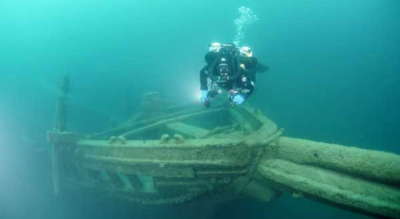ARTICLE AD BOX

Inchcape 1, sunk off Al Aqah in 2001, has transformed into a thriving marine habitat, attracting divers with its diverse marine life/ Image: vipdivingdubai
In a unique blend of environmental stewardship and ecotourism, the UAE has deliberately sunk three ships off its east coast, not as an accident, but as a conscious effort to promote marine conservation.
The vessels, Inchcape 1, Inchcape 2, and Inchcape 10, have been transformed into thriving artificial reefs that now attract divers from across the world. This innovative approach is a testament to the UAE’s commitment to protecting its natural resources while fostering sustainable tourism.
The Concept: Artificial Reefs for Marine Life
The concept behind sinking these ships is simple yet effective: to create artificial reefs that mimic the role of natural coral reefs in the ocean.
Over time, the ships have become vibrant ecosystems, teeming with marine life. These reefs not only support a wide range of fish species but also help to promote biodiversity, offering an underwater experience for divers. The UAE’s efforts are especially significant given the rising threats to ocean ecosystems, including pollution and coral bleaching. The ships, once decommissioned, serve as a reminder that responsible management can help restore marine habitats.
Inchcape 1: A Diver’s Haven in Al Aqah
Sunk in 2001, Inchcape 1 lies about 32 meters below the surface, off the coast of Al Aqah, Fujairah. Accessible by boat in just five minutes from Al Aqah, this site is recommended for experienced divers, thanks to its depth and complexity. The wreck has turned into a bustling underwater city, home to large schools of red snapper, cardinal fish, and a wide variety of other marine creatures.
Divers exploring the site can witness firsthand how the wreck has evolved into a rich marine habitat.
Snorkelling and diving equipment are essential to access the site, and the area is becoming a popular spot for eco-tourists looking to experience the UAE’s commitment to sustainable diving.
Inchcape 2: A Thriving Reef off Khor Fakkan
Inchcape 2, intentionally sunk in 2002, rests at a depth of around 22 meters off the coast of Khor Fakkan. It has quickly become one of the most popular dive sites in the region. As the wreck has developed into a thriving coral reef, it now attracts a variety of marine life, including parrotfish, moray eels, small boxfish, and long-tailed rays.
The presence of barracudas also adds to the site's allure, making it a must-visit destination for professional divers seeking to explore a healthy and diverse underwater ecosystem. To visit, divers typically embark on a 25-minute boat ride from Al Aqah. Diving equipment is mandatory, and access is managed through licensed diving centers. These centers not only ensure safety but also educate visitors on how artificial reefs contribute to ocean health.
Inchcape 10: A Marine Wonderland in Fujairah
Perhaps the most remarkable of the three, Inchcape 10 (formerly known as 'Awaiz') was sunk in 2003. Resting at a depth of about 23 meters off Fujairah, it is one of the largest ships deliberately sunk to create an artificial reef. This site has become a focal point for divers due to its rich biodiversity, including moray eels, barracudas, and other species. Located just an 8-minute boat ride from the Fujairah International Marine Club, the wreck offers an exciting opportunity to explore the wonders of marine life.
The site is open year-round, and divers must book through licensed diving centers to gain access. Similar to the other wrecks, the presence of thriving marine life at Inchcape 10 speaks volumes about the success of the UAE’s ecotourism initiatives.
The Impact: Ecological Balance and Marine Conservation
Saleh Al-Dhahouri, a diver from Dibba Al Fujairah, has seen firsthand the positive transformation that these shipwrecks have brought to the area. “The diving there is wonderful, a beautiful place, and you couldn't get over the amount of fish and coral,” he said, as told to Khaleej Times.
He explained that before the ships were sunk, diving opportunities were limited. “With these ships, diving sites have increased, and they have become part of the weekly diving program,” he added, highlighting how these artificial reefs have revitalized local dive tourism. Emirati diver Mintaha Al Shehhi, who specializes in sharks, has been diving in the region for over three years. She praised the ecological balance at sites like Inchcape 2, where frequent sightings of sharks and turtles indicate a healthy environment. “Sharks do not choose random locations, and turtles only pass through when they feel secure and find natural abundance,” she said, emphasizing that the presence of these larger creatures is a sign of a thriving and balanced marine ecosystem.



.png)
.png)
.png)
















 18 hours ago
3
18 hours ago
3









 English (US) ·
English (US) ·